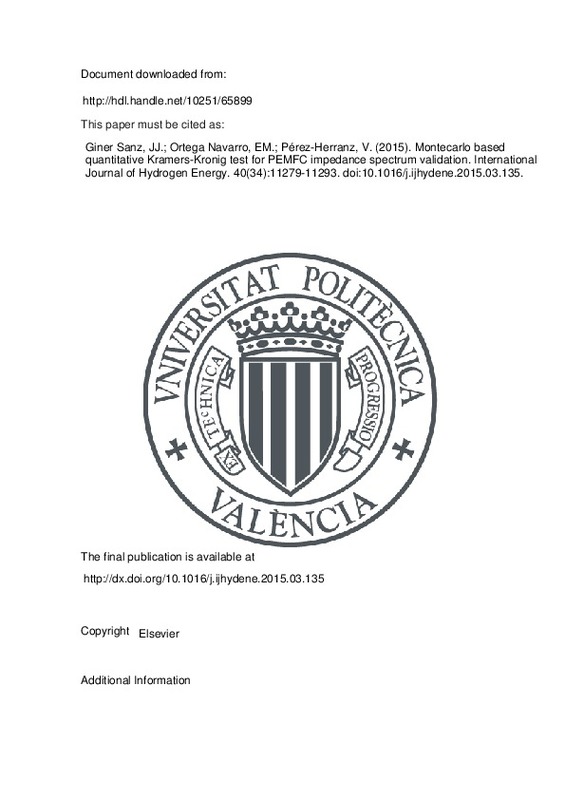JavaScript is disabled for your browser. Some features of this site may not work without it.
Buscar en RiuNet
Listar
Mi cuenta
Estadísticas
Ayuda RiuNet
Admin. UPV
Montecarlo based quantitative Kramers-Kronig test for PEMFC impedance spectrum validation
Mostrar el registro completo del ítem
Giner Sanz, JJ.; Ortega Navarro, EM.; Pérez-Herranz, V. (2015). Montecarlo based quantitative Kramers-Kronig test for PEMFC impedance spectrum validation. International Journal of Hydrogen Energy. 40(34):11279-11293. https://doi.org/10.1016/j.ijhydene.2015.03.135
Por favor, use este identificador para citar o enlazar este ítem: http://hdl.handle.net/10251/65899
Ficheros en el ítem
Metadatos del ítem
| Título: | Montecarlo based quantitative Kramers-Kronig test for PEMFC impedance spectrum validation | |
| Autor: | ||
| Entidad UPV: |
|
|
| Fecha difusión: |
|
|
| Resumen: |
Electrochemical Impedance Spectroscopy (EIS) is a very powerful tool to study the behaviour of electrochemical systems. At present, it is widely used in the fuel cell field in order to study challenging cutting edge issues ...[+]
|
|
| Palabras clave: |
|
|
| Derechos de uso: | Reserva de todos los derechos | |
| Fuente: |
|
|
| DOI: |
|
|
| Editorial: |
|
|
| Versión del editor: | http://dx.doi.org/10.1016/j.ijhydene.2015.03.135 | |
| Código del Proyecto: |
|
|
| Agradecimientos: |
|
|
| Tipo: |
|







![[Cerrado]](/themes/UPV/images/candado.png)


